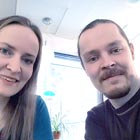
History of Driftmoon development
18.08.2009While I officially started work on Driftmoon this spring, the engine it uses has already been in development from June 2005. That's when I had the idea to create a multiplayer platformer game, with the moddability of Notrium and a medieval theme. As I recall the original idea was to have a large world massive multiplayer world with playable levels as arenas, and it would have had a story mode where you could have completed quests by yourself or with anybody else playing the same level at the same time. I soon teamed up with Quanrian, some of you may remember him as the co-author of later Notrium versions. And the game was renamed Cormoon.
By that time we had a nice multiplayer platformer game going on, we had a level editor, and all that was missing was the actual story based game. So we set out to do that, we made huge plans for various worlds there would be, as I recall we had up to a dozen playable races. At first we envisioned to implement the most combat based race, and around the beginning of 2007 we had our combat code ready. We had attack and defend moves. The animations of your enemies would give you a hint when to defend and when to attack, and it would have a nice rhytmic feeling of swordfighting, attacking your enemy and parrying his attacks. We even had an automatic system where you could just start a game, and it would connect you to anyone playing the level already.
At this point we realized the massive multiplayer vision was way too complex for two people to handle. We didn't have the server resources for it, and try as we might, we never could have run the whole thing had the game actually been a success. So we cut down the multiplayer part, and what we had was a nice single player Cormoon. Obviously we had to change the combat mechanics, redesign the races so that they would work in single player, we even redesigned our controls from time to time. We grew our team by a couple of awesome artists, Mika and Catherine. Here's special thanks to you both!
Somewhere around January 2008 we had a version where you could platform around in our little world. We had physics puzzles, we had lighting effects, sprite based animations you could tweak on the fly, easy to use 2.5D object editor within the game. We even had a couple of playable races. We were just missing the game. We knew what the world was like, we even knew what sort of languages the people there spoke and what religious systems they had -- we just didn't know what levels to start with, what would the player do when it comes down to actually sitting there and playing. Why was the player there and what was he supposed to do?
Real life was taking it's share of our time to communicate, and with Quanrian and me living in totally different time zones, we were hard pressed to find time to talk about where to start actual content development. By start of 2009 we were talking about completely different games. As it is often with independent games, the ambitious goals and the lack of communication made it impossible to finish the game in any available timeframe. In case some indie game developers ever read this, the lessons I learned are:
- You should have a very good idea what the game is that you're making. Getting the game idea down first before doing anything is key. Prototype if you need to, but don't start on the actual game if you just have a vague idea of a theme or a single gameplay mechanic that you want to implement.
- Don't do your own engine, unless you're working on a very simple game, or your game absolutely needs some cutting edge features that no other engine will provide. Spending years making an engine before pinning down your game idea is a bad idea. If making engines is what you're good at, perhaps you're not a game maker but a game engine maker?
- Work on something you are capable of. Lofty dreams are fine, but if you dream of making a huge MMORPG, then your work will not be making the game. It will be full time work getting money to run your huge studio. If you are just one or a couple of people, and don't want to make paying people's salaries your day job, then you should focus on simple, attainable.
I often have game ideas in my dreams, and so it was that morning that I woke up with this memory of a dream. In my dream I was on an island, visiting a small tavern. I had just looted a huge castle in the woods, and I was just about ready to pay a visit to the castle waiting at the bottom of the ocean. But just the island is not what I wanted to capture in the game, it was the feeling I had in my dream of having found so many cool places, of finding clues of where to go next, of exploration and new items.
That's the history of Driftmoon. That's not four years wasted, as the engine looks and plays well, and I've learned a few good lessons from working with Cormoon. I'm still hard at work putting the whole game down on paper, as making an RPG is pretty complex, but I'm confident that it will not fall into the same failings that stopped Cormoon.
So, do you have anything to add from those four years? I'm sure many of you remember some bits of information better.
blog comments powered by Disqus